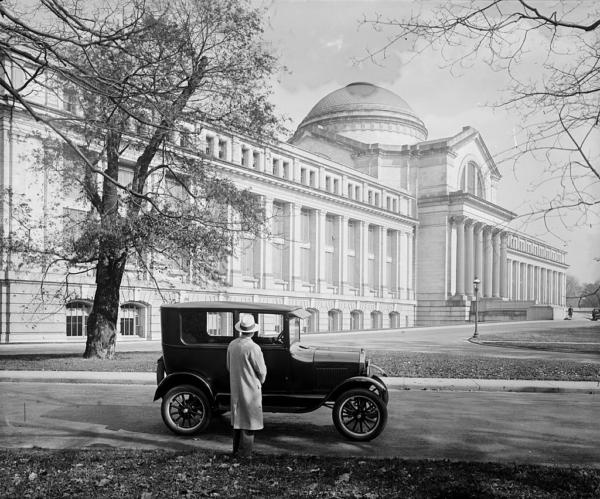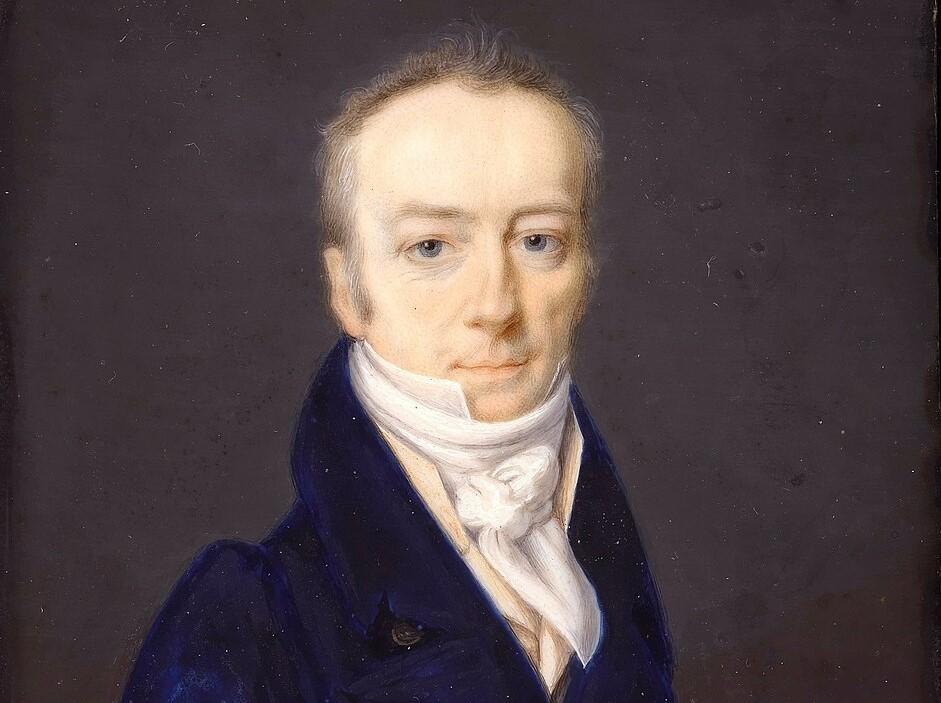In 1765, Elizabeth Hungerford Keate Macie moved to Paris from England to give birth to her illegitimate son in secret. James Lewis Macie was the son of Macie and her lover Hugh Smithson, the first Duke of Northumberland. There was, however, a caveat to his name. Elizabeth Macie made her son promise that when she died, he would change his last name to Smithson. This he did in 1801, a year after her passing. Smithson, who was born in Paris and died in Genoa, became a naturalized British citizen around the age of 10.

Model T Ford parked in front of the Smithsonian's National Museum in 1926. National Photo Company. Library of Congress. Public Domain






